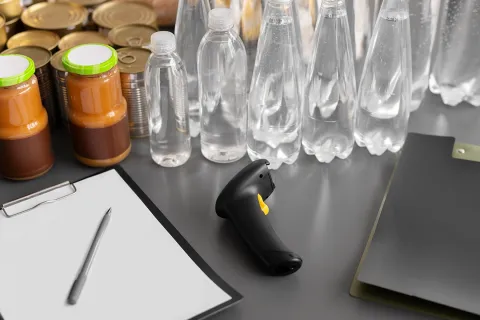As sustainability becomes a global priority, consumer packaging materials are under scrutiny for their environmental impact. Ecolabeling has emerged as a key way for businesses to communicate their commitment to sustainable packaging practices and meet consumer demand for eco-friendly products which use eco-friendly packaging material. But how do companies navigate the process of obtaining ecolabels for their packaging materials? Here's a general framework to help guide you through the steps.
What is Ecolabeling?
Ecolabeling is a certification that indicates a product meets certain environmental standards. It provides consumers with reliable, third-party assurance that the packaging is sustainable, made using eco- friendly packaging solutions and practices, and has a reduced ecological footprint. Achieving this certification can give companies a competitive edge, build brand loyalty, and meet sustainable packaging regulatory compliance in global markets.
Key Steps to Obtain Ecolabeling for Consumer Packaging
While the process can vary depending on the specific ecolabel program chosen, the following general framework can help companies navigate ecolabeling for their packaging materials:
- Choose an Ecolabel Program
Start by identifying the ecolabel program that aligns with your sustainability goals and packaging materials. Common ecolabels include Green Seal, ECOLOGO®, and EU Ecolabel. Each program has different criteria, so understanding the specific requirements is crucial. - Review the Program Requirements
Once you’ve selected a program, study the criteria that your packaging materials must meet. These may include the use of renewable or recyclable materials, minimal environmental impact during production, and responsible sourcing. Study the program’s standards, such as ISO14024, which often include:
- Life Cycle Assessment for packaging(LCA): Many ecolabel programs require an LCA, which evaluates the environmental impact of the packaging across its entire life cycle—from raw material extraction to disposal. This assessment helps in identifying areas for improvement and ensuring that the packaging meets the program’s sustainability benchmarks
- Ingredient Restrictions: Limiting harmful chemicals.
- Sustainable Packaging Materials: Ensuring the use of eco-friendly packaging materials.
Manufacturing Practices: Enhancing energy efficiency and reducing waste. Aim to improve product durability and reusability to lower environmental impact.
- Prepare Your Application
Gather the required documentation, which may include:

- Submit Your Application and Pay Fees
After gathering all the necessary information, submit your application for ecolabeling. Send your completed application to the ecolabel program along with the necessary fees. - Independent Verification
An independent audit will verify your claims through on-site inspections or additional documentation reviews to ensure compliance with the ecolabel standards. - Approval and Label Issuance
If your packaging meets the required standards, you’ll receive certification and permission to use the ecolabel on your products. Displaying this label can enhance your brand's eco-credentials and build trust with consumers. Once verified, you will be granted permission to use the ecolabel on your product. Follow the guidelines provided for label placement and messaging.
Why is Ecolabeling Important?
With growing environmental concerns, ecolabeling is more than just a marketing tool—it’s a critical component of sustainable business practices. Ecolabels help companies reduce their environmental footprint, meet regulatory standards, and appeal to the increasing number of environmentally conscious consumers.
Conclusion
Ecolabeling for sustainable packaging of consumer products is a significant step in demonstrating your brand's commitment to sustainability and packaging. By following the ecolabeling process, companies not only contribute to environmental conservation but also gain a competitive edge in the market.
Freyr’s experts provide extensive regulatory support for sustainable packaging and ecolabeling, encompassing compliance assessments, gap analysis, testing, and guidance on ecolabel schemes and claims. Additionally, the team also has expertise in recycling logo compliance, Post-Consumer Recycled (PCR) material, flushability requirements for personal hygiene products, understanding of Extended Producer Responsibility (EPR), Producer Responsibility Organization (PRO), and assistance in complying with greenwashing regulations and understanding waste handling requirements obligations.










